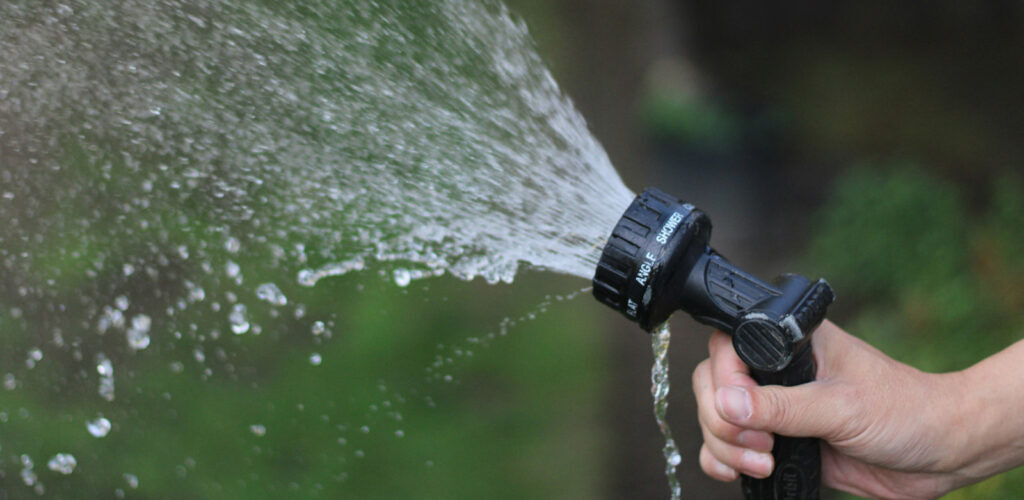Pressure Washing VS. Soft Washing (What’s the Difference and Which Do You Need?)
Key Takeaways
- Clear differences between pressure washing and soft washing so you know exactly how each method works.
- Best uses for each technique, from driveways and concrete to siding, roofs, and decks.
- Tips for choosing the right service based on Southern Oregon’s wet winters, moss, and wildfire ash.
- Why professional help matters to protect your home’s surfaces and landscaping.
Keeping your home’s exterior clean is more than a cosmetic job – it protects siding, roofs, decks, and walkways from damage. In Southern Oregon’s Rogue Valley, where wet winters, moss growth, and wildfire ash are common, you’ll hear about two popular methods: pressure washing and soft washing. They may sound similar, but the techniques and best uses are quite different.
This guide explains how each method works and which to use for maintenance, cleaning, prep, and more. Choosing the right service matters.
What Is Pressure Washing?
Pressure washing relies on high-pressure water, typically between 1,500 and 4,000 PSI, to blast away built-up grime. It’s a fast way to refresh tough surfaces when dirt or stains have really settled in.
- Best For Hard Surfaces
Driveways, sidewalks, brick, and concrete patios. - Removes Tough Buildup
Oil stains, embedded grime, and mildew on durable materials. - Quick, Visible Results
Ideal when you need a dramatic before-and-after cleanup.
Because the force is strong, it can damage softer materials like siding or painted wood if not handled by a professional.
What Is Soft Washing?
Soft washing takes a different approach, using low pressure paired with special cleaning solutions to break down and kill organic growth. It’s designed to be gentle yet thorough, making it ideal for delicate finishes.
- Ideal for Delicate Surfaces
Roof shingles, painted siding, wood decks, and fences. - Sanitizes as It Cleans
The eco-friendly solution eliminates algae, moss, and mold at the root. - Longer-Lasting Results
By killing growth instead of just rinsing it off, surfaces stay cleaner for longer.
Differences Between Pressure Washing VS. Soft Washing
Before choosing a method, it helps to compare the core factors side by side. Here’s a quick breakdown of how pressure washing and soft washing differ.
Pressure Level
High for pressure washing vs. low for soft washing.
Cleaning Agents
Mostly water for pressure washing; mild, eco-friendly cleaning solutions for soft washing.
Best Applications
Concrete, brick, stone vs. roofs, siding, and painted or stained wood.
Risk of Damage
Higher with pressure washing if used on delicate surfaces; minimal with soft washing.
Choosing the Right Method for Your Home
Are you unsure which approach best suits your property? Think about the materials you’re cleaning, the problems you’re facing, and the results you want to see.
- Surface Material
Hardscapes like driveways and walkways can handle high pressure. Roofs, siding, and fences need soft washing. - Local Climate Issues
Southern Oregon’s wet winters encourage moss and algae, while wildfire smoke leaves behind fine ash. Soft washing excels at sanitizing these problems. - Desired Outcome
If you need deep sanitation to prevent regrowth, soft washing is best. For heavy grime on tough surfaces, pressure washing delivers fast results.
- Surface Material
Keeping your property clean isn’t a one-size-fits-all job. The ideal approach depends on the surface, the type of buildup, and even the season. In the Rogue Valley – where wet winters, moss growth, and wildfire ash are common – you may need both methods at different times.
Remember, even the best technique only lasts so long. Most homes benefit from a full pressure wash about once a year to stay ahead of grime and organic growth (see our guide on how often to pressure wash) for more details.
Why Professional Service Matters
Even with the right equipment, these methods require experience to be effective and safe. Professionals know how to adjust pressure, mix solutions, and protect landscaping while cleaning.
- Adjust water pressure to avoid damaging siding, paint, or shingles.
- Use eco-friendly cleaners safely around landscaping and pets.
- Combine pressure and soft washing when different parts of your property need different treatments.
Pacific Home Painting provides both pressure and soft washing across Medford, Grants Pass, Eagle Point, and the Rogue Valley, giving homeowners, property managers, and HOA boards a one-stop solution for every surface.
Both pressure washing and soft washing help keep your home looking its best and extend the lifespan of surfaces. Pressure washing is perfect for hard surfaces that can withstand high pressure, while soft washing gently cleans and sanitizes more delicate areas. For a tailored cleaning plan that protects your property, schedule a free quote with Pacific Home Painting today.
FAQs
It removes the current growth and slows regrowth by treating spores, but periodic maintenance is still recommended.
If done incorrectly, yes. That’s why professional equipment and technique are essential.
Yes. Reputable professionals use biodegradable, low-toxicity cleaners and rinse thoroughly to protect surrounding greenery.
